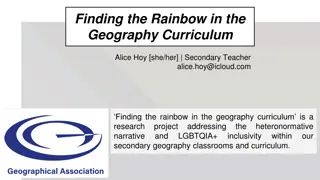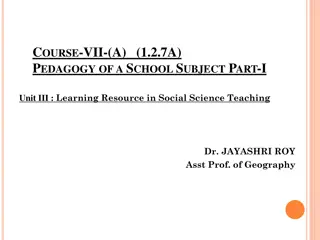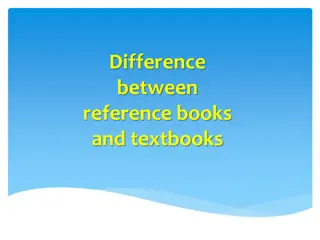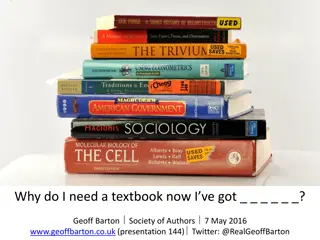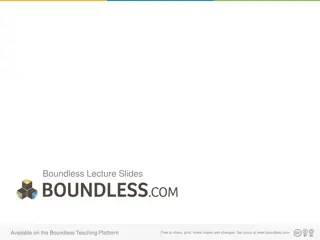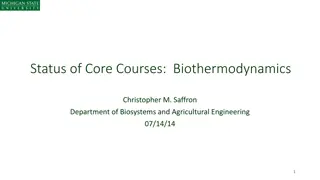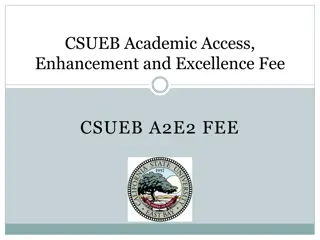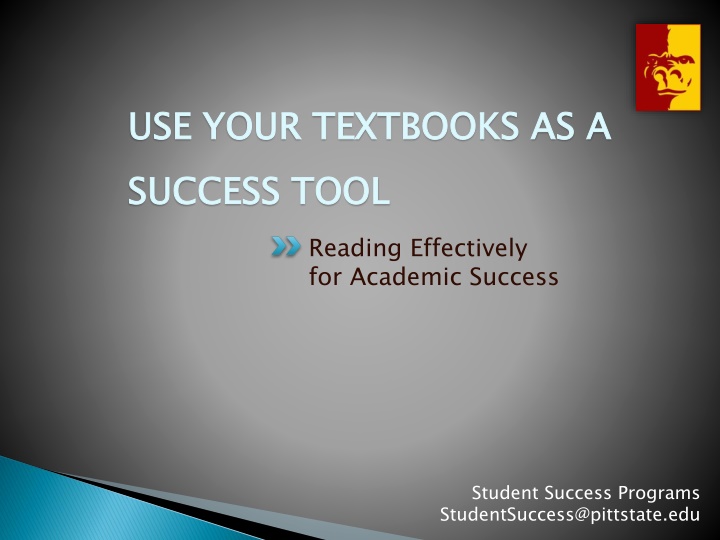
Maximizing Academic Success Through Effective Textbook Reading Strategies
Discover the key to academic success by leveraging your textbooks as a valuable tool for learning. Learn how to read purposefully, engage with the material, and optimize your study time for better outcomes in your courses.
Download Presentation

Please find below an Image/Link to download the presentation.
The content on the website is provided AS IS for your information and personal use only. It may not be sold, licensed, or shared on other websites without obtaining consent from the author. If you encounter any issues during the download, it is possible that the publisher has removed the file from their server.
You are allowed to download the files provided on this website for personal or commercial use, subject to the condition that they are used lawfully. All files are the property of their respective owners.
The content on the website is provided AS IS for your information and personal use only. It may not be sold, licensed, or shared on other websites without obtaining consent from the author.
E N D
Presentation Transcript
USE YOUR TEXTBOOKS AS A SUCCESS TOOL Reading Effectively for Academic Success USE YOUR TEXTBOOKS AS A SUCCESS TOOL Student Success Programs StudentSuccess@pittstate.edu
With hocked gems financing him, he defied all scornful laughter that tried to prevent his scheme. Your eyes deceive, they said. It is like a table, not an egg. Now three sturdy sisters sought truth. As they forged along, sometimes through calm vastness, yet more often over turbulent peaks and valleys, their days became weeks as many doubters spread fearful rumors about the edge. At last, from nowhere winged creatures appeared, signifying the journey s end.
Sound familiar? Sound familiar? The teacher assigned readings from the text, but those aren t really important. I can get all I need from the course lecture. The instructor expects that students will read the assigned text before class and lectures.
I bought a textbook and actually tried to read it a few times, but I fell asleep, got bored, didn t understand, etc It s possible to approach reading your textbooks in a way that is engaging, purposeful and will likely increase your success in courses.
I dont have time to go to class, complete homework, go to work, have a social life and read all of the textbook assignments. You re right, you probably don t have time to do it all, unless you find ways to do it smarter. If you approach your reading assignments with a plan and a few useful tips, you ll cut the time required to read the assignment and increase what you get out of texts.
Lecture Textbook Outline
Reading furnishes the mind only with materials of knowledge; it is thinking that makes what we read ours. ~John Locke It's good to know how to read, but it's dangerous to know how to read and not how to interpret what you're reading. ~Mike Tyson
Scanning Skimming Study Reading Unfamiliar terminology/vocabulary Critical Reading
Scanning Looking for a specific piece of information You know what you re looking for Eyes move quickly or scan over the reading material Scanning Use when you ve already read the chapter or material and are revisiting it to study or reference for an assignment
Skimming For a general idea of what you re reading When you have to read a large amount in a short time 5-10 minutes to familiarize yourself with the text Find the main ideas in each paragraph or section Ignore the details in the supporting sentences Use when you re pre-reading the chapter or revisiting the chapter for review Skimming
When scanning or skimming the text, look for any new words that appear repeatedly Look for them in the glossary of your text (if available) and/or a dictionary Note a quick definition for each term and adjust them as you read if necessary Note a synonym or two Sound out the word Structure: Prefixes & suffixes Context: how it is used in the sentence or paragraph Confirm: check context, definition and synonyms to make sure you have a clear understanding of the new term Check with your professor to confirm meaning
Study Reading To read difficult material with a high level of comprehension Slower rate of reading Challenge to understand the material May have to read sections more than once Reading aloud is helpful Read with a dictionary available Study Reading When you have pre-read the material and are now digging in for comprehension and learning.
Critical Reading Critical Reading You ve learned the material by pre-reading and study reading, and now you need to process and analyze the information When you need to write a review, summary or another type of assignment asking for analysis or opinion When studying for a test with essay questions
Critical Reading To make judgments about how To interpret or develop an interpretation Reflective Reading for ways of thinking about the subject How is the evidence (facts, examples, etc ) used and interpreted? How does the text reach its conclusions? Critical Reading (cont) how a text is argued
Critical Reading What is the central claim or thesis? What audience is the text written for? Historical context Critical Reading (cont) What kind of reasoning is used? Concepts, theories, methods How is the information broken down (analyzed) by the author? Be aware: different disciplines (subject areas) will have different ways of arguing
Critical Reading Examine the evidence Supporting facts, examples What counts as evidence: statistics, history, literature What sources are used for evidence: primary or secondary Critical Reading (cont)
Evaluation When you re asked to determine the strength or weakness of an argument Could it be argued differently Gap in the argument Evidence interpreted differently Strong or weak conclusions Opposing argument(s) Evaluation
A good plan is like a road map: it shows the final destination and usually the best way to get there. ~H. Stanley Judd
Survey: Textbook Reconnaissance Survey: Textbook Reconnaissance Read all bold-face subtitles Look at maps, diagrams, charts, graphs, tables, photos, captions: anything that displays information visually Read colored inserts within text
Survey: Textbook Reconnaissance Survey: Textbook Reconnaissance (cont) Read chapter summary: often at the beginning or end of each chapter Read chapter summary questions: often at the beginning or end of each chapter Use the summary questions to create a basic outline for your notes Read with a goal in mind Helps you focus, stay engaged and concentrate on the text. Read with a goal in mind: : Helps you focus, stay engaged and concentrate on the text.
Read With A Purpose: Read With A Purpose: Turn Your Notes Into Your Study Guide Turn Your Notes Into Your Study Guide Use the summary questions to create a basic outline for your notes Convert titles, subtitles, etc. into questions Convert the underlined or highlighted main ideas in each section into an outline for your notes If the chapter is long, take it section by section
Question: For each section in the chapter, ask yourself 4 basic questions What is the main point or idea? What evidence/information supports the main point? What are the applications or examples? How is this related to the rest of the chapter, the book, the class, the world, to me? Question: question as you Survey Answer these questions in your own words. Answer these questions in your own words.
Recite: Create a summary of the entire chapter when finished by compiling the section notes Recite: talk to yourself Read questions, answers & notes out loud Key ideas & new terms in your own words If it seems unclear when you hear yourself speak it, you need to get more info, ask questions or listen for further info during the in-class lecture
Review: re-read your notes Within 24hrs a week later once a month Frequent review = better retention & less study time Short, spaced review of your Textbook & Lecture Notes Repetition: the 4th R
10 minutes of study 5 minutes 2-4 minutes of study of study 100%- - - - - - - - - - - - - - - - - - - - - - - - - - - - - - - - - - - - - - - - - - - - - - - - - - - - - - - - - - - - - - - - - - - Recall Day 1 Day 2 Day 7 Day 30 Short-Term Memory Long-Term Memory
Its not about reading everything, but rather about choosing wisely - it s about managing information. - Be selective - Read with a Plan & Purpose - See the big picture & make connections - Improve recall/enhance memory with rehearsal techniques
Easy ways to build in more time for Reading: 5-10 minutes before each class, review notes from previous class lecture 5-10 minutes after each class, review notes and add a few summary sentences Grab a classmate or two and meet up for lunch: bring class notes & review/discuss class lecture Mute TV during commercials to review lecture notes and skim reading assignments
Go to class. Go to class. 1. 2. 1. Be on time. Be on time. 3. Sit to the front and center Sit to the front and center of the classroom. 4. Bring a pen, paper, notebook, and books. Bring a pen, paper, notebook, and books. 5. Dress like a student Dress like a student (not like an athlete, rap star, rock musician, or surfer). 6. Show respect and enthusiasm Show respect and enthusiasm to your instructors. 7. Listen, listen, listen Listen, listen, listen--you can't learn while talking to your peers during class. 8. Pay attention Pay attention--don't doodle, doze, or daydream. 9. Try to contribute once per class period discussion. Participation counts--and helps. Try to contribute once per class period, with a question or contribution to 10. Have clearly marked notebooks notebooks--for each class. Have clearly marked notebooks, with separate sections--or separate
Take notes. Take notes. 11. 12. 11. Use a dictionary. Use a dictionary. This will increase your vocabulary and teach you correct spelling. 13. Have a partner/"buddy" system for studying. groups. Have a partner/"buddy" system for studying. Have parents, friends, dormmates, etc. quiz you. Form study 14. Read, read, read. hands on. Read, read, read. Read magazines, the newspaper, sports books, science fiction, anything you can get your 15. Set aside at least three hours a day Set aside at least three hours a day, six days a week, to study. to study. 16. Get some of your homework done during school. before sports. Get some of your homework done during school. Use free periods, extra time between classes, and the time 17. Sacrifice and work during times when you know other people aren't working. Saturday afternoon. It will be worth it. Sacrifice and work during times when you know other people aren't working. Work on a Friday night or 18. Volunteer for extra credit. Volunteer for extra credit. 19. Get involved in extracurricular activities. Club or Cultural Awareness Organization, write for the student newspaper, give tours, etc. Get involved. Get involved in extracurricular activities. Don't merely attend classes and go to practice. Join the Government 20. Work hard to many great things that you will accomplish in life. Work hard and be proud that you are working hard and learning. Realize that education is a key ingredient
Follow us on Social Media: Facebook: PSU Student Success Center Instagram & Twitter: @psusuccess Follow us on Social Media:
Academic Resource Center, Sweet Briar College, VA. (accessed October 2010). Reading Methods: SQ3R. Retrieved from http://www.arc.sbc.edu/sq3r.html . Academic Skills Program, University of Canberra, Australia. (accessed October 2010). Reading and Remembering. Retrieved from http://www.canberra.edu.au/studyskills/learning/reading . Academic Tips.org. The Golden 20 for Academic Success. Retrieved from http://academictips.org/acad/academic_success.html on January 29, 2013. Ellis, D. (1997). Becoming A Master Student(8th ed.). Boston, MA: Houghton Mifflin Company. (pgs 69-89). Heiman, M., & Slomianko, J. (2004). Learning to Learn(10th ed.). Somerville, MA: Learning to Learn, Inc. (pgs 102-110). Landsberger, Joe. (accessed October 2010). Study Guides and Strategies. Retrieved from http://www.studygs.net/crtread.htm.
Academic Resource Center, Sweet Briar College, VA. (accessed October 2010). Reading Methods: SQ3R. Retrieved from http://www.arc.sbc.edu/sq3r.html . Academic Skills Program, University of Canberra, Australia. (accessed October 2010). Reading and Remembering. Retrieved from http://www.canberra.edu.au/studyskills/learning/reading . Ellis, D. (1997). Becoming A Master Student(8th ed.). Boston, MA: Houghton Mifflin Company. (pgs 69-89). Heiman, M., & Slomianko, J. (2004). Learning to Learn(10th ed.). Somerville, MA: Learning to Learn, Inc. (pgs 102-110). Landsberger, Joe. (accessed October 2010). Study Guides and Strategies. Retrieved from http://www.studygs.net/crtread.htm.
USE YOUR TEXTBOOKS AS A SUCCESS TOOL Reading Effectively for Academic Success USE YOUR TEXTBOOKS AS A SUCCESS TOOL Student Success Programs StudentSuccess@pittstate.edu


